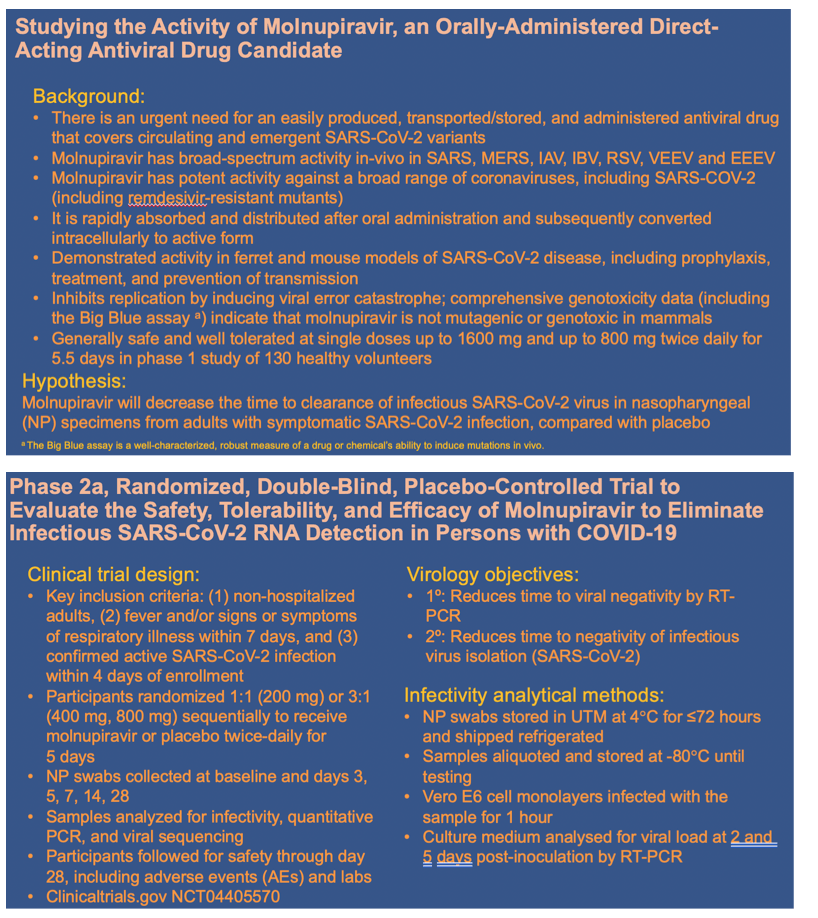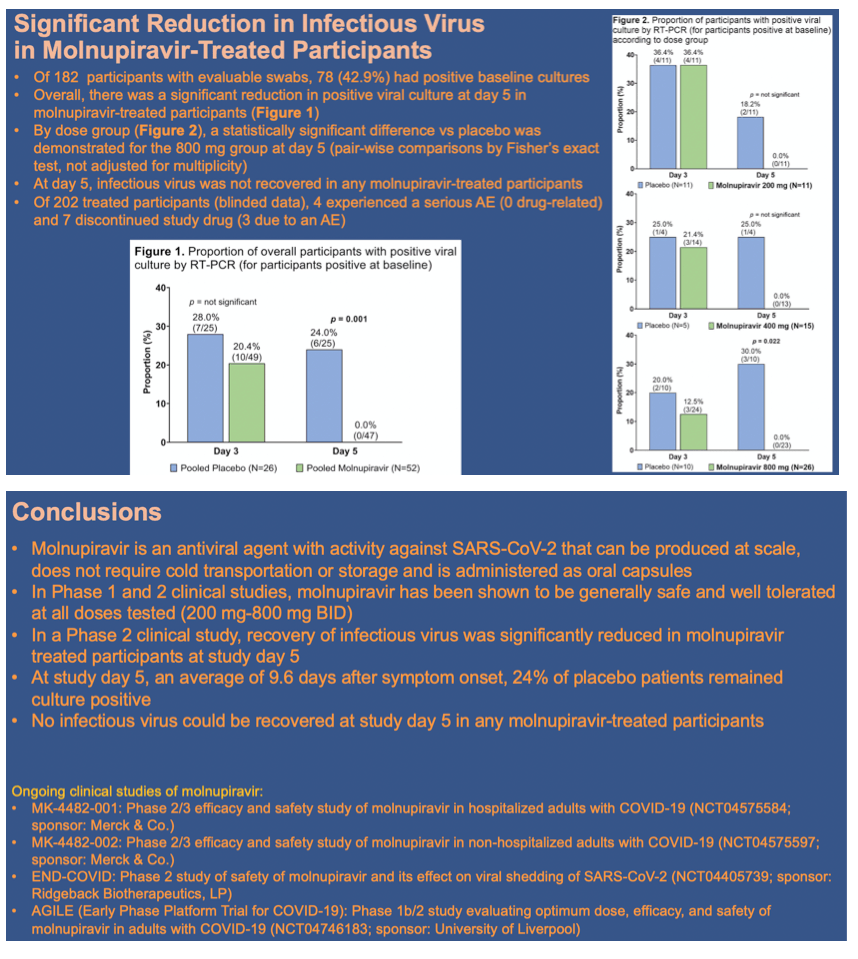 |
 |
 |
| |
REDUCTION IN INFECTIOUS SARS-CoV-2 IN TREATMENT STUDY OF COVID-19 WITH MOLNUPIRAVIR
|
| |
| |
CROI 2021 March 6-10 Reported by Jules Levin
Wendy P. Painter1, Timothy Sheahan2, Ralph Baric2, Wayne Holman1, John Donovan3, Lei Fang3, Paul Alabanza2, Joseph J. Eron2, Erin Goecker4, Robert Coombs4, William Fischer2
1Ridgeback Biotherapeutics, LP, Miami, FL, 2University of North Carolina at Chapel Hill, Chapel Hill, NC, USA, 3Pharstat Inc, Raleigh, NC, 4University of Washington, Seattle, WA, USA
Background: The emergence of SARS-CoV-2 viral variants threatens current anti-viral and preventative strategies, including monoclonal antibodies and vaccines. Critically, the limited supply of vaccines and the complex logistics surrounding the delivery of infusion-based therapies herald the need for an easily produced, distributed, and specific direct-acting antiviral for COVID-19 that limits progression of illness and ideally prevents transmission.
Methods: The efficacy of molnupiravir was evaluated in a double-blind, randomized, placebo-controlled, Phase 2 dose-range finding study using realtime polymerase chain reaction (RT-PCR) and virus isolation was conducted at 11 study sites in the U.S.
Participants were randomized if they had signs or symptoms of COVID-19 within 7 days, and a positive SARS-CoV-2 RT-PCR within 4 days of enrollment. Initially, participants were randomized in a 1:1 ratio to receive 200 mg molnupiravir or placebo twice daily for 5 days. Subsequently, in the dose-range finding portion of the study, participants were randomized in a 3:1 ratio to receive 200, 400, or 800 mg molnupiravir or placebo twice daily for 5 days. Nasopharyngeal swabs were analyzed from 175 subjects at enrollment, Day 3, and Day 5 for SARS-CoV-2 infectivity. Samples were stored at 4°C for up to 72 hours, shipped refrigerated, aliquoted, and stored at -80°C until testing. Vero E6 cell monolayers were infected with the sample for 1 hour. Culture medium was analyzed for viral load at 2 and 5 days post-infection by RT-PCR.
Results: Seventy-eight (45%) participants, median 4.62 days (min. 1.40, max. 7.54) from symptom onset, had a positive SARS-CoV-2 culture at enrollment (52 on active and 26 on placebo). The percentage of participants with a positive viral culture at enrollment who were positive on Day 3 was 20.4% on active and 28% on placebo (p = 0.56). At day 5, 24% of placebo participants were culture- positive compared to none treated with molnupiravir (p = 0.001). Between treatment, comparisons were performed using Fisher's exact test.
Conclusion: This is the first demonstration of reduced infectiousness by antiviral therapy in people with SARS-2 infection. This simple, short-course oral therapy may benefit individuals and public health and is unlikely to be impacted by spike-protein variants.


|
| |
|
 |
 |
|
|